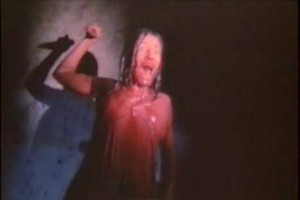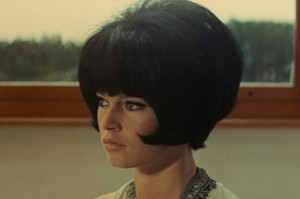Certificate XX: The Video Nasties

It’s 30 years since the country was wrapped up in a media fire-storm of never-before seen proportions. We’re talking Video Nasties, folks…
In 1983 the Department of Public Prosecution made known a list of 72 films which had earned their stripes, in the eyes of some (sections of the press, and commentators such as Mary Whitehouse), as full-blown Video Nasties. For anybody of a certain age, the phrase still resonates keenly, for journalist and genre aficionado Chris Brown, keenly enough to dedicate a podcast to the task of working his way through the entire list.
For anyone below that certain age, we asked Chris to explain: what exactly constituted a Video Nasty? “The Video Nasties are a number of films considered obscene in this country in the early 80s. At the start of video tape, it was considered a publication, like the book, so it didn’t fall under any laws apart from obscenity. Small distributors effectively using the same system as Grindhouse in America, doing very cheap films … it became a media furore, and people went to prison for selling and distributing these films. The DPP had a physical checklist of the ones that will corrupt you and destroy your mind!”
We recall the video man popping round once a week and our parents picking up a couple of films we’d never be allowed to see (that was okay, we had our Transformers cartoons to placate us). What exactly did these films – such as Abel Ferrara’s Driller Killer – have to do to be deemed corrupt? “What marked Driller Killer out was its cover. Effectively … there was a feeding frenzy in the media. [The films featured] sadistic violence, scenes of rape, animal cruelty, that kind of stuff. Some of the films are very nasty but some aren’t. They’re the kind of things you wouldn’t want your kids to see, basically.”
It was those depictions of sadistic violence, and rape in particular, that fed the media frenzy Chris mentions, driving hordes of unsuspecting readers of the – mostly – tabloid press to scour the shelves of their local video shops. Just so they could publically express their disgust. Seriously though, surely a large part of their popularity was the infamy caused by the moral panic. Yes, Chris nods: “It elevated some of the movies higher than they deserved, but I’m grateful for the list because I wouldn’t have seen Possession (dir. Andrzej Zulawski) – it would have got lost I think.”
If you’re expecting the Video Nasties Podcast to do just what it says on the tin, you’ll be pleasantly surprised. Chris says that the list, and the films on it, will be discussed with an eye on the times in which they were made and some of the reasons such a list came about in the first place. “The period was really important – it sculpted the way we see horror in this country; but it’s a lesson for how a combination of overzealous media guardians, politicians making a name for themselves and the press, can whip up a fury of 15 years of some of the strictest censorship in the Western world.”
He’s certain that the political and cultural climate of the day had a lot to do with the furore, and that it has echoes in modern day Britain. “To be able to talk about the films properly, you need to be able to put them in context of the time. We had the Falklands, recession, massive unemployment; those social factors all come into play. You don’t wanna blame the economy or social disorder on things you can’t fix if you’re a politician, you wanna blame it on a tangible thing, in this case Video Nasties. If there’s a clampdown [today] on video games, I wouldn’t be surprised … it’s possible a right wing government ‘helps’ as well.”

Make no mistake though, the movies themselves will take centre stage. Things got underway last week with Joe D’Amato’s Anthropophagus: The Beast (aka The Grim Reaper and Zombie 7: Grim Reaper). Of all of the films on the DPP list, why start with this one? “It’s a film you still can’t get in this country uncut – that’s a good basis to start on. When you imagine VNs you imagine monsters, and notorious scenes. This film has a very notorious scene where a man eats a foetus. It’s overwhelmingly ridiculous and obviously fake, but it touches those bases without going all out like I Spit On Your Grave or Cannibal Holocaust.”
While Chris hints at similar conditions being in place now, given what we’ve said about the films being the product of a very distinct set of circumstances, we wonder is the genre lodged in that very particular time period. Could something similar happen now, or are audiences just too savvy and unshockable? “There are films that will get banned in this country… the BBFC (British Board of Film Classification) are posturing to tighten up a little bit. The more extreme stuff still gets cut: initially they wanted to ban The Human Centipede 2 and on appeal, with cuts, let it through. Films still get banned in this country – The Bunny Game, Grotesque; there aren’t as many as back in the day, but there are still films that push that one button – it’s always sexual violence.”
If we’re able to get hold of films like The Human Centipede (and its sequel), with only films deemed too sexually violent falling foul of the censor, is that the legacy of the Video Nasty, that there isn’t a great deal we can’t watch without fear of public judgement? Chris comes back to the video games industry: “Manhunt 1 and 2 are massively influenced by Video Nasties, right down to the grainy aesthetic. It got banned for a while and released on appeal in a cut form … the films are still here. Evil Dead is getting remade and due out later this year”.
With 72 films to make his way through, the Video Nasties Podcast is a pretty big undertaking – you can’t just go through the motions with such a task. What does Chris want it to achieve? “I wanna turn around and say take a look … see what you think. You might not like [the films] but there is value and worth in all Cinema. They’re an important part of British culture, even if you don’t agree with them morally. I’m trying to do a podcast that isn’t just a horror podcast – if you have an interest in cinema, the history of cinema and the making of films, especially low budget films.” That kinda ticks all the boxes for us. We’re in, how about you?
Catch up with the Video Nasties Podcast NOW!





